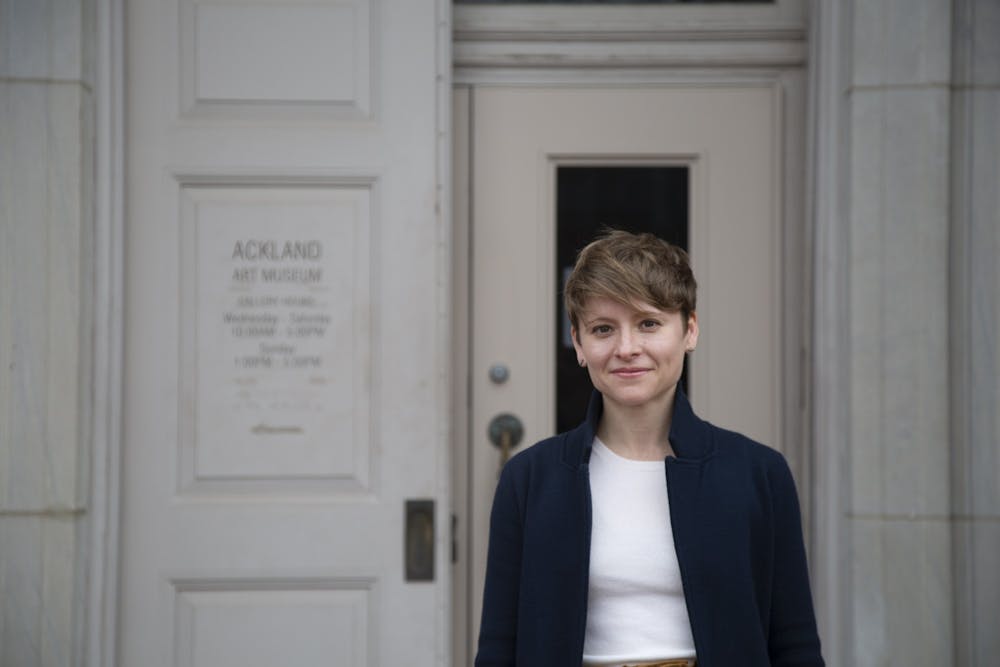No matter whether UNC students are majoring in art history, chemistry or journalism, there’s a chance they have taken classes with the graduate teaching fellows at the Ackland Art Museum. These are the graduate students who take students around the museum, helping them to learn from the art on display. But not only are their students learning — they are too.
About four years ago, the Ackland and the Department of Art and Art History collaborated to create the Object-Based Teaching Fellowship, a one-year position for graduate students in which the fellow teaches classes at the museum.
Since the creation of the Object-Based Teaching Fellowship, the Ackland has added three more graduate teaching positions: an Ackland graduate intern, who works on a museum project and teaches, and two positions solely dedicated to teaching.
Elizabeth Manekin, Ackland’s head of university programs and academic projects, said these graduate students are pivotal to the museum’s educational mission.
“We teach students in hundreds of classes across dozens of disciplines, and that is not possible without the graduate students that work here,” Manekin said.
Alexandra Ziegler, an art history Ph.D. candidate who served as last year’s Object-Based Teaching Fellow and is currently a graduate teaching fellow, said that her experience teaching at the Ackland has shown her that any discipline can be taught using art.
“At the core of all the activities we do are fundamental skills like communication, critical thinking and problem solving, as well as empathy, which are useful in every profession and discipline,” Ziegler said. “It's really just a matter of thinking carefully and creatively about how you're framing the art objects and the discussions around them.”
Brantly Moore, this year’s fellow and a Ph.D. candidate in art history, said the interdisciplinary nature of art is part of what drew her to studying it. She visited the Philadelphia Museum of Art on a family trip and saw Roman artifacts, including a comb that particularly fascinated her. The historical and functional natures of the piece hooked her.
“Art and studying it became this way to cultivate empathy and understanding across spatial and temporal boundaries in a way you don't have, in my mind, with anything else,” Moore said.




